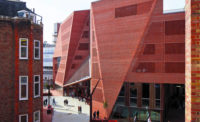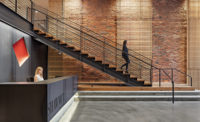The American Institute of Architects (AIA) has announced that starting in January 2009 it will require its members to complete four hours per year of continuing education focused on sustainable design, constituting half of the eight hours required for topics in health, safety, and welfare. The requirement will remain in place until 2012, when it will be reevaluated.
The organization now faces the task of vetting its existing courses to determine whether they will count toward the new requirements. According to Thomas Lowther, senior director of continuing education systems, AIA has decided on four broad thresholds by which to judge courses. Eligible courses must address the AIA definition of sustainability (*see below); must be structured programs rather than self-study; must cover health, safety, and welfare in at least 75 percent of their content; and must address at least one of the Committee on the Environment’s (COTE) measures of sustainable design and performance.
This new requirement reflects not only AIA’s growing commitment to green building but also a wider commitment to sustainability in architecture education and testing. The National Council of Architectural Registration Boards (NCARB) develops and administers the Architect Registration Examination (ARE), which has always incorporated questions on environmentally sensitive design, according to Stephen Nutt, AIA, vice president of programs at NCARB. In 2000, NCARB completed a practice analysis of the profession as a whole. One of the outcomes of this analysis was to increase the number of sustainability questions in the exam starting in 2004. The ARE is a computerized test, so no two exams are alike: some test takers see many questions on environmental design in all six multiple-choice sections, while others see few. In addition to the ARE, NCARB integrates green design topics into its continuing education program.
Some argue that NCARB’s inclusion of environmentally sensitive design in the ARE does not go far enough. “We’ve reached a tipping point in which many people believe that these issues need to be a part of standard practice, and the ARE should respond to that,” says Mara Baum, Assoc. AIA, of Anshen+Allen. But Nutt notes that the test must remain comprehensive and that every increase in the number of sustainability questions may result in a decrease in questions in other areas. Baum also said that many of the multiple-choice questions on environmental design seemed to be poorly written, with some offering no good environmental choice for an answer. The exam is being used as a teaching tool, Baum says, and “this practice sends a bad message to test takers and propagates incorrect information.”
* AIA COTE Definition of Sustainability
The linked domains of sustainability are environmental (natural patterns and flows), economic (financial patterns and equity), and social (human, cultural, and spiritual). Sustainable design is a collaborative process that involves thinking ecologically—studying systems, relationships, and interactions—in order to design in ways that remove rather than contribute stress from systems. The sustainable design process holistically and creatively connects land use and design at the regional level and addresses community design and mobility; site ecology and water use; place-based energy generation, performance, and security; materials and construction; light and air; bioclimatic design; and issues of long life and loose fit. True sustainable design is beautiful, humane, socially appropriate, and restorative.





Post a comment to this article
Report Abusive Comment